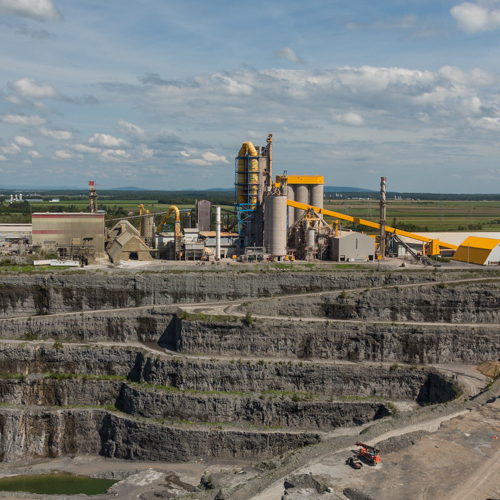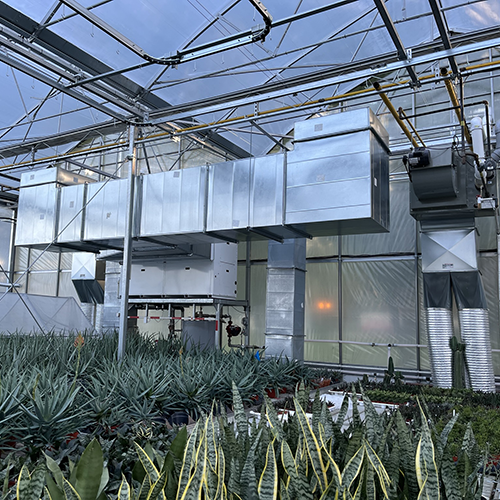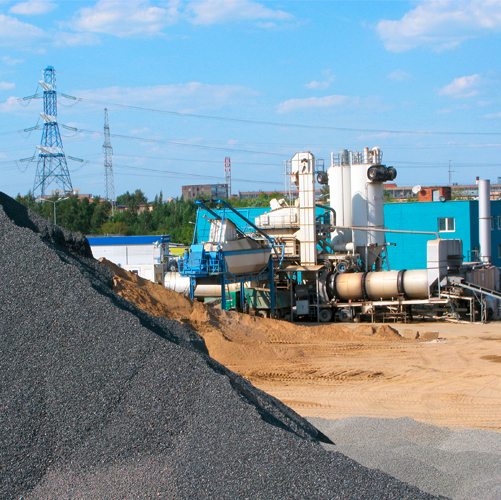For heating and air-conditioning their premises, many existing buildings and new constructions use a heating and cooling water distribution system. Until quite recently, besides producing energy (air conditioning and heating), these water loops were individualized to fit just one building. Today, they extend to several buildings, so now we call them energy loops. Urban planning driving innovation
Changes to current urban planning, whether growing urban densification or mixed uses in the same building, have encouraged the emergence of new ideas about energy resilience from both a production and distribution point of view.
Complementing these urban changes, the arrival of more efficient technologies and the use of renewable energies have encouraged the emergence of energy distribution networks, called energy loops, that extend to several buildings. What is an energy loop?
Energy loops can be found:
- Within one building, linking several sections with varied uses;
- Between a number of buildings on the same lot;
- Or sometimes spanning several buildings in a neighbourhood, which supply each other via the energy loop:
- The site that needs heat will draw it from the loop, cooling it in the process;
- The site that needs cooling will transfer its heat to the loop, warming it.
So, in winter, the heat generated by a commercial or industrial building or a data centre, for example, could be used to heat a multi-residential building. The heat removed from one zone becomes the input for a neighbouring zone. The mix of uses plays an important role in the planning, which must be done very early on in close consultation with all stakeholders.
Although several technical and financial elements distinguish these concepts, energy loops, district energy systems (DES) and urban heating networks2 all share certain features: use of efficient systems, heat recovery, varied uses and loads and, most importantly, meticulous planning. Advantages of energy loops
This solution offers several advantages for many of the parties involved in this type of project.3 The following table presents some of them (non-exhaustive list):
|
Project stakeholders |
Advantages |
|
Developer |
|
|
Customers (residential and commercial) |
|
|
Institutions (government, municipal) |
|
|
Builders, operators and financial partners |
|
Growing interest and market
An ever greater number of project proponents are showing interest in this solution. What’s more, according to data from the International District Energy Association, this trend has been constantly evolving for the past several years.
And the United Nations Environment Programme4 also recognizes the importance of loops and networks in the transition to sustainable energy and encourages their development. They not only align with environmental and sustainable strategies but also benefit all stakeholders involved in creating a project. It’s an example of green economics and resiliency.
Long-term vision and evolving concept
Obviously, designing this system is complex, but it is doable, especially when one knows on which elements to focus.
Indeed, reviewing a large number of projects quickly leads to the conclusion that there is no single strategy or solution but rather a whole range of them. Many external factors favour different solutions, including the energy, legislative, regulatory and regional contexts, among others. From an internal, project-specific point of view, the group of partners for the loop and the construction speed will influence the project model.
However, certain concepts appear to have common foundations:
- A long-term vision: The analysis and planning of energy needs must cover a very long period of time. And the energy, demographic, real-estate and other parameters must generally exceed the system’s life cycle. It is not unusual to have a 40- or 50-year project plan that extends beyond the 2050 horizon.
- The energy loop is scalable: it must be able to integrate new efficient technologies. The project will have to achieve a balance, maximizing changing energy needs and benefiting from the latest renewable-energy technology. In so doing, it will utilize the best of each energy source over its entire life cycle.
The energy loop: a centralized, scalable multisource, multiuse network
- Resiliency, performance and energy combination: An urban energy system’s robustness and resiliency will depend on the energy sources being diverse, integrated and adjusted throughout its life cycle. Furthermore, heating (or cooling) using an urban system generally allows for the installation of more robust technologies and the use of better operating and maintenance practices than would be possible by investing in smaller-scale individual building systems. Generating decentralized heat is typically more efficient than using systems installed in isolated buildings and consequently reduces the environmental impact.5
- Diversity and heat recovery: What’s more, it allows one to make the best use of each energy source. For example, in Québec, it would not be surprising to have a strategy that leverages the robustness and power of natural gas heating while also benefitting from the performance of heat-pump technologies. Although these two supply sources provide the foundation of the concept, it would still be expected that the operating plan aim to integrate renewable sources (biomass, solar, heat recovery from data centres or waste water, etc.) when the time comes, each of which will have its strengths.
Unlike the first heating networks, the new generations of networks, such as energy loops, leverage a concept related to the sharing economy: heat recovery and load diversity. Designing an energy loop is more complicted compared to a traditional heating networks. Designers need to know its specificities to design them properly.
Nathalie Bouchard, Eng.
DATECH Advisor, Technology & Energy Efficiency, Énergir
2. Arbitrary term for the purposes of this article.
3. Arbitrary distribution of the roles: several models are possible depending on the type, scale and location of the project.
4. DISTRICT ENERGY IN CITIES, Unlocking the Potential of Energy Efficiency and Renewable Energy, United Nations Environment Programme, 2015
5. Source: 2015 ASHRAE Handbook – HVAC Applications, Chapter 12 – District heating and cooling “Generating thermal energy from a central plan is normally more efficient than using in-building equipment (i.e. a decentralized approach) and thus reduces environmental impacts. The greater efficiencies arise because of larger, more efficient equipment and the ability to stage that equipment […]”
![]()
Continue reading










